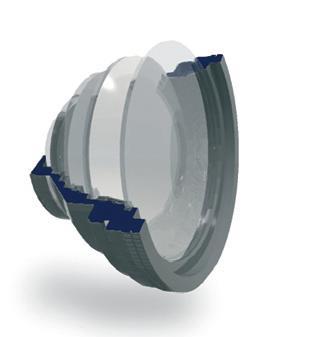- Optomechanics
- Precision Optics
- Singlets
- LINOS Achromats & Lens Systems
- LINOS Laseroptics & Lenses
- LINOS Machine Vision Solutions
- Micro Imaging
- Polarization Optics
- Mirrors
- LINOS Thin Film Coatings
- LINOS Faraday Isolators
- LINOS Laser Modulators & Pockels Cells
- Prisms
- Spectral & Neutral Filters
- Beamsplitters
- Optical Windows & Diffusers
- Optics Software
- Lightsources & Laser
- New Products
Technical annotations F-Theta-Ronar


Characteristics of F-Theta lenses
F-Theta lenses have two main characteristics. When a beam is deflected by a scanning mirror in front of a lens, then the scanned distance is proportional to the scanning angle. Secondly the focus position over the entire scan field is always in the same plane.
Basic calculations of F-Theta-Ronar lenses
All LINOS F-Theta-Ronar lenses achieve diffraction limited performance. The truncated entrance-beam diameter and the image spot diameter refer to the intensity 1/e² at Gaussian illumination and for ideal M²=1. The spot size of LINOS F-Theta-Ronar lenses can be calculated with the following formula:Spot-Ø = 1.83 * λ * FL / beam-Ø
Spot-Ø: image spot diameter [µm]
1.83: factor of apodisation
λ: wavelength [nm]
FL: focal length [mm]
Beam-Ø: entrance-beam diameter [mm]
The scan length in each direction x or y can be calculated by the formula:
2y= FL * 2Өy * π/180 and 2x= FL * 2Өx * π/180
2x, 2y: scan length in direction x,y [mm]
FL: focal length [mm]
2Өx,y: max. scan angle Theta for each mirror [°]
π/180: conversion factor (into radian)
The mirror distances m1 and m2 are recommended values and may vary. A smaller entrance-beam diameter allows larger scan angles and therefore larger scan fields are achievable.







 Order Catalog
Order Catalog